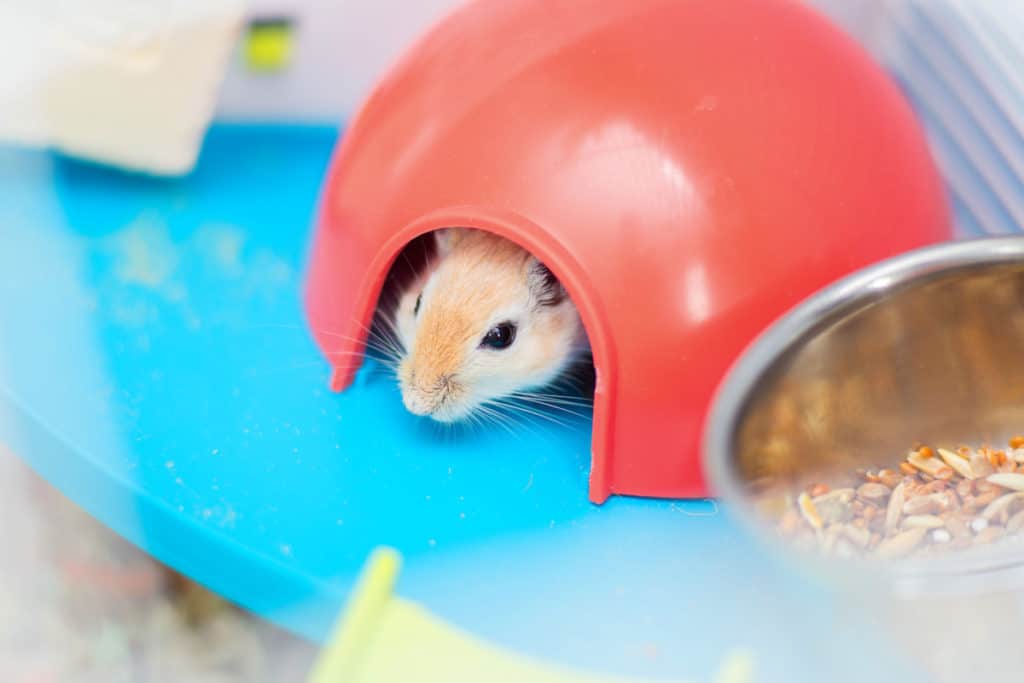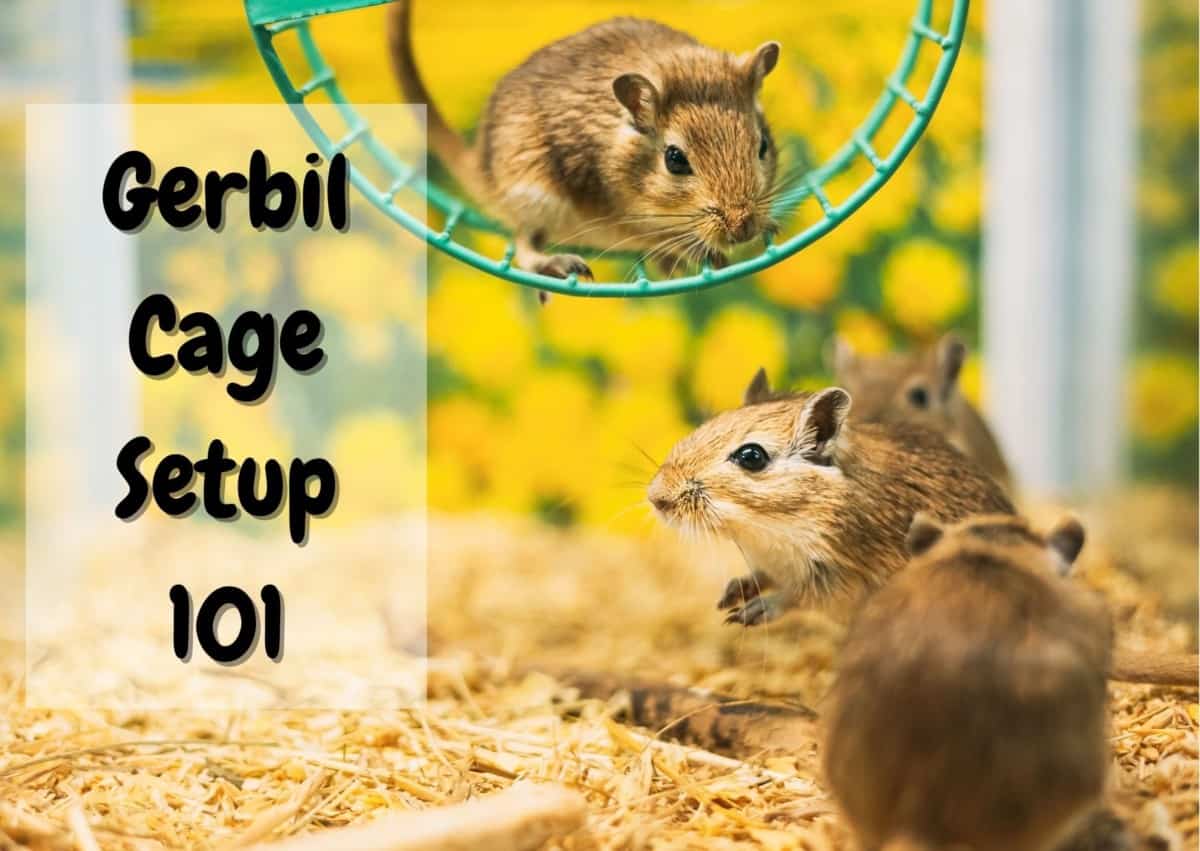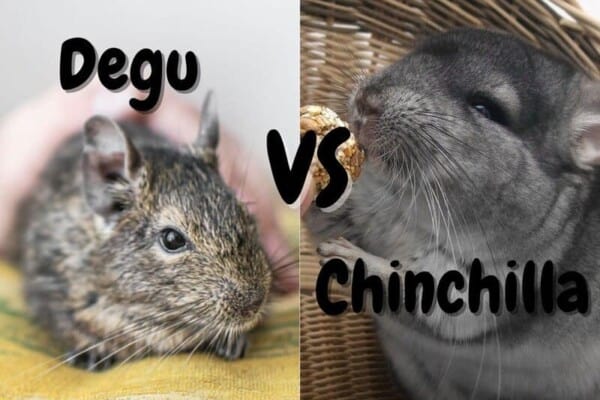Just because a gerbil is a tiny fuzzy critter does mean that their habitat needs to be tiny too. If you are wondering what goes into a gerbil cage, this guide will help you make an informed choice to create the best cage setup for your gerbil.
In this post, we will cover the type of cage or terrarium you should use, as well as the toys and accessories that are best for gerbils. Here is what you need to know to make your gerbils happy in their cage so they don’t get bored or feel cramped.
What type of cage should I use for my gerbils?
Despite their size, gerbils do like to have a cage that is roomy enough for them to call their home. So when it comes to the proper size housing, you must have a formula for how much room a single gerbil needs to have.
You need to begin with a tank or cage that is 20 gallons or roughly 12 inches tall, 30 inches long, and 12 inches wide. This is fine for two gerbils to occupy but it doesn’t hurt to give them a larger habitat. This is evidently recommended when you add more gerbils.
You need to add one square foot of space for each gerbil added to a habitat meant for two gerbils. This means that a cage can have a second-floor extension that adds just as much space upstairs as it has downstairs. This will be enough room to house no more than 4 gerbils, yet three gerbils are perfectly fine for this size too.
Another important thing to remember is to have a plan for which sex you pair together. If you put a male with a female, they will be fine together but expect them to reproduce at some point. If you don’t have the right size cage to handle a new batch of gerbils, this will cause the parents to become stressed and this may lead to cannibalism. So you’ll need to create a cage extension that increases their habitat.
Bar spacing
If you decide to buy a cage for your gerbils, you need to make sure that bar spacing is adequate for them. Since gerbils are so tiny, bar spacing might be too wide that their little heads can slip through.
If you choose a cage, it would be better to find a cage mesh that doesn’t let them poke their head through. Some habitats can be made from fish tanks, but the top cover must be open mesh for ventilation. This way, gerbils can still get enough air within their habitat.
Several levels and platforms

Separate levels are a good thing for gerbils even if you have just two gerbils in a cage. This gives them activities that take up selected areas among their living quarters. Gerbils will need ramps that allow them to safely climb to their separate levels.
They are not known for climbing – like hamsters or other rodents – but expect them to attempt to climb if they are bored. Just make sure that any climbing ramp doesn’t have tall spaces where a gerbil can potentially fall from. If they do fall, there should be enough soft bedding that could cushion their fall.
Materials used
Gerbils are rodents that will chew and gnaw on everything since this is their nature. Anything that you put in a gerbil habitat needs to be safe for them to chew on. Cages that have plastic in them are potential chewing targets that will be destroyed and possibly harmful to your gerbil’s health.
The best materials that go into the living area should be made from natural wood materials, ceramic products, and metal structures. These materials are tougher and won’t be a chewing hazard for gerbils. So from the perspective of safety, all plastic materials in your cage should be avoided as much as possible.
What type of bedding should I use?
All types of bedding are good for gerbils as long as they don’t cause allergies or choking danger. Often the best natural material is from Aspen but many alternatives are great for burrowing. Don’t ever use materials that aren’t eco-friendly and/or edible from a rodent’s point of view.
Creating space in your gerbil cage
You need to be creative when designing a living space inside a cage for your gerbils. This keeps them busy and active during the time when you don’t interact with them. Most of their time is spent grooming and burrowing, but they will be content to explore activity stations.
These stations are simple structures they can play into like toilet paper rolls. These are best glued together using edible paste or Elmer’s white glue. You can also use cardboard, pop-sticks, and empty paper product packaging. These are items that you would usually throw out anyway and make an affordable solution for your gerbils.
The glue won’t hurt your gerbils since these are also used in schools and kindergarten. Don’t ever use hot glue even though it’s fast, since this is plastic that can harm your gerbil or block its digestive system.
Accessories you can put inside your gerbil cage

1. Hideouts
You can provide a hideout but unless they are playing or exploring, they won’t use this as a living area. They will prefer to burrow into their bedding and make this their personal living area. That shouldn’t sway you from giving them places to inspect and invade as they roam around the habitat.
These hideouts should all be gerbil approved and made from cardboard, ceramic, or natural plant materials. They might like a coconut shell that has an entrance door or a leftover macaroni box with windows. You can’t go wrong with using toilet paper tubes glued together with white glue or sticky paste.
2. Food bowls
Having a food bowl is a good way to feed an entire group but watch out for hoarding. Gerbils will secretly hoard food from others out of habit. You can try to ration their food by giving it equally at each feeding time. This way every gerbil gets the same amount of food no matter what. Even though this is hard if you have a day job, you don’t want one to get more than the others.
Food bowls can’t be plastic since they will be chewed for sure. Only use a metal tray or one that is made from ceramic.
3. Water dispenser
It’s a good idea to get a water bottle and teach them to drink from it. It won’t take them long to get an idea of how to drink from it if you tap on the edge to get their attention. When they are thirsty, they will get their daily drink as they wish.
Buy one or several bottles to make sure they have enough water every day. They drink little, but it’s good to have several bottles if you keep many gerbils in the same cage to make sure they all have access to water. It’s also good to clean the bottle at least every other day.
4. Bedding
Gerbils especially like digging so they prefer natural materials that they can use to make burrows and tunnels. This needs to be a material that keeps its shape and little tunnels that don’t collapse easily.
Aspen shaving is good and it won’t be harmful like pine shaving would be. You might do better with paper shavings that are also natural. These are very good at absorbing urine and keeping the smell to a minimum.
What type of toys is good for gerbils?
1. Exercise wheel
Gerbils love a good run on an exercise wheel but because they chew plastic materials, it should be made from metal. These wheels can be a bit noisy so it’s a good idea to oil the parts that are spinning so it stays quiet. Use a good vegetable oil that is not toxic for your gerbil if they try to lick it.
Alternatively, you may give them a wooden wheel that they will use also use as a chew toy. Depending on the quality and durability of the wood, you will need to replace the wheel every few months.
2. Exercise ball
If you want to let your gerbil roam in the living room or on the floor, an exercise ball can’t be beaten. Just don’t let other family pets interact with them since this will be a huge threat to them and will make them stressed. They have been known to have seizures from the fright of being confronted by a family dog or cat.
3. Huts
Gerbils love crawling into all sorts of hiding spots inside their cage. If these are chewable and made from cardboard materials, they are even better. After a while, they can be thrown out and you put a new house for them.
4. Safe woods gerbils can chew on
Only wood that is safe for them is advised for them to gnaw on. These include ash, bamboo, birch, elm, oak, or pine that is kiln-dried. For a complete list, take a look at this article about gerbil food that will tell you what’s safe and what’s not for your gerbil to chew in the “safe wood” section.
Where should I place the cage in the house?
Gerbils also have a sleep schedule and need just as much time to be undisturbed so they don’t get nervous. This is why they need a calm and quiet room that they can be placed in. There are a few rules to pick the right place for your gerbil cage:
- Indoors (always)
- Away from direct sunlight
- In a warm place (68-75 degrees Fahrenheit)
- Away from predators like cats and dogs
- Away from windows
- Away from noisy areas
- Away from TV and other sound systems
Just because they are tiny doesn’t mean they aren’t going to be quiet as mice. And since they will be awake on and off through the night, this might make it hard for you to sleep. If you have earplugs this might be one solution.
Should I cover my gerbil cage?
This is not recommended since a gerbil retreats to its burrow to go to sleep. This is only creating air circulation problems if you try to cover their cage or tank and also add extra heat that builds up. Moreover, they might chew the material that can be reached.
How about temperature and humidity?
The ideal temperature for gerbils is 68 to 75 degrees Fahrenheit. The temperature needs to be as constant as possible but that will change throughout the year.
In their native habitat, they will burrow underground for safety, retreating on very hot days. Since you can’t reproduce this in their bedding material, the room where they stay should have some kind of temperature control.
When it comes to humidity, it should be between 40-70 percent. High humidity isn’t good for them because they are desert animals, so regions that get humid in the summer need to have moisture traps or dehumidifiers in the room.
How often do I need to clean my gerbil cage?
Change their bedding materials every week since urine can make your gerbil cage quite smelly. Gerbils are pretty clean when it comes to where they poop and pee so these zones where they repeatedly deposit poop should be cleaned every day. This way, the cage they live in will be cleaner and smell-free.
How often should I take my gerbil out of its cage?
After you finally train your gerbil to be tame, they will enjoy being handled whenever you come into the room. It’s part of their life at this point and this should be done every time you visit their cage. This is why most owners love having them as pocket pets. Your gerbil might try to bite you in the first few weeks out of fear, but this behavior should recede as your critter gets to know you.
Can you put gerbils with other animals inside the cage?
Gerbils can only live with other gerbils. Some pet owners claim that gerbils and hamsters can live together, but this is untrue. Putting both species in the same tank or cage will end with one of the others being killed or seriously injured.
Where can I find cool gerbil cage setup ideas?
Like many ideas, they all start with seeing something that somebody else did online. The amount of DIY ideas start with a look at Google pictures and images of creative gerbil cages. The rest is a matter of how creative you want to get.
I recommend Youtube for more than a few fun cage ideas, but Pinterest is also full of these ideas likewise. You can also look at social media sites on Facebook for gerbil fan groups for cage decoration ideas.
Related articles:
- The cost of owning a gerbil – A complete cost breakdown
- Gerbil behavior – What is your gerbil expressing?
Resources and further reading:
- Habitat Selection: An Experimental Field Test with Two Gerbil Species, Z. Abramsky, M. L. Rosenzweig, B. Pinshow, J. S. Brown, B. Kotler,W. A. Mitchell
- Effect of cage size on the ontogeny of stereotyped behaviour in gerbils, C.Wiedenmayer
- Caring for your gerbil, Blue Cross
Contents
- What type of cage should I use for my gerbils?
- Accessories you can put inside your gerbil cage
- What type of toys is good for gerbils?
- Where should I place the cage in the house?
- How often do I need to clean my gerbil cage?
- How often should I take my gerbil out of its cage?
- Can you put gerbils with other animals inside the cage?
- Where can I find cool gerbil cage setup ideas?













